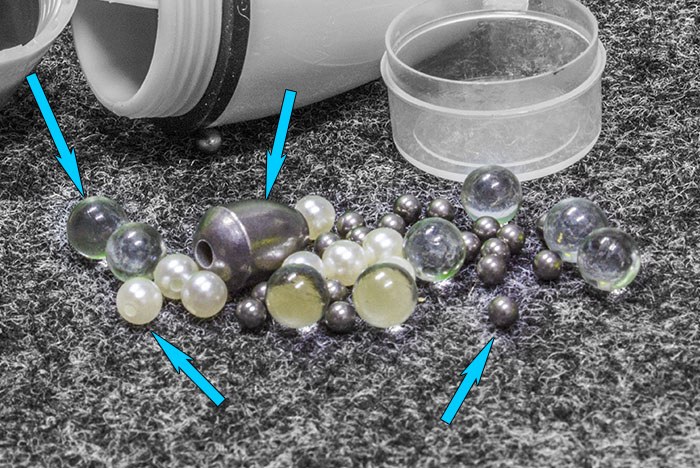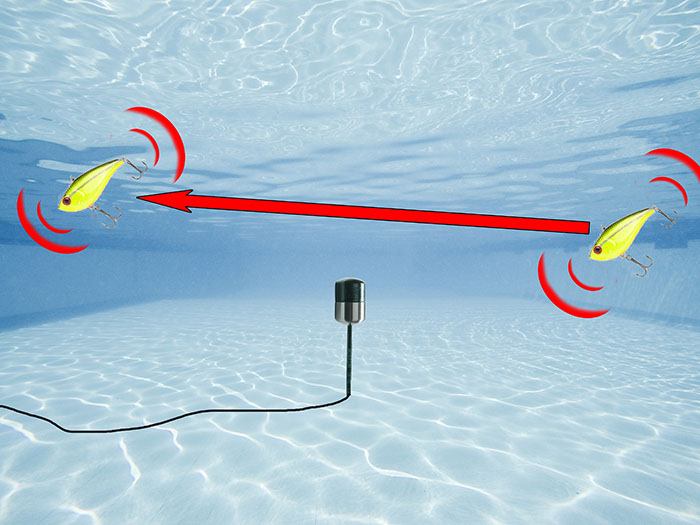Marketers tell you one thing, research shows another.
Inshore anglers love catching speckled trout and redfish, and we have come up with ingenious methods to do so.
We've gone so far as to cast specialized lures that pop, splash, buzz, flash and more.
But we especially love lures that make noise with rattles.
Smart Idea
Sound travels about 4,920 feet per second through water.
So it makes sense a lure that rattles would garner the attention of biting fish.
The idea is that the noise produced will pique the interest of predator fish, bringing them closer to our baits.
Hell, we've been using rattling lures for years; one walk cannot inside a tackle store without bumping into lures designed for such purposes.
Do rattles actually work?
You may be thinking, "Of course rattling lures work, I caught fish on them!"
But how do you know it was the rattle sound that made the fish find and strike the lure?
Maybe it was the vibration (not the sound), or the flash or simply the sight of the lure.
Rattling sounds work this well....
Well, we do know that rattling sounds work, to one degree or another.
The Shark Callers of Kontu rely on rattles to attract their prey.
They literally call sharks to come near them...using a huge baby rattle.

Their hand crafted rattles work the same as our own rattling lures.
So, it's safe to assume rattles work to the benefit of anglers.
Which rattles work best?
It's a good question.
After all, there are many different kinds and sizes:
- glass
- metal
- marble-sized
- BB-sized

But which ones work the best?
It's hard to measure such things in an environment as dynamic as the marsh.
To be sure, one would need to measure the dominant frequency of each rattle, and compare that against the known hearing range of fish.
Rattling Lure Experimentation
A group of bass anglers and biologists set out to test this exact idea.
Dr. Hong Yan and Benjamin Messer put twenty-three different rattling lures to the test at the Frankfort State Fish Hatchery in Kentucky, with the aid of the manager, Mike Larimore.
The idea was to measure the dominant frequency of each rattling lure and see if it landed in the hearing range of fish.
To do this they set up a tank to perform their tests.
In the middle was a hydrophone to record the sound of each lure.

The team reeled each lure past it four times to record the sound created, and used a computer to determine the dominant frequency of each lure.
What is a dominant frequency?
Sound technicians define the "dominant frequency" to be the frequency carrying the highest energy level in a power spectrum.
In plain English, it's the loudest noise.
A good example is a car: many things are making noises inside a car when it's running, but the exhaust is usually the loudest and most easily heard.
The results they got from the experiment were pretty shocking.
What did they discover?
The team of scientists and anglers learned that only a few of the lures tested could be heard within the audible range of fish.
Twenty of the lures produced dominant frequencies ranging from 3,208Hz to 9,991Hz.
Largemouth bass (and speckled trout and redfish, arguably) cannot hear well above 1,000Hz, so those twenty lures are out.
Only the three remaining lures produced a dominant frequency below 1,000Hz.
Excuse my rant...
This test confirms what I say every day: most of what you hear about fishing tackle is bullshit.
Remember the saying:
Lures catch more fishermen than they do fish.
It only takes the appeal of a baby rattle and gleam of a salesman's smile to get anglers to shell out their hard-earned dollars.
This is why I have a focus on knowledge in my blog and university.
The expert know-how of locating and catching fish will beat dumbass gimmicks every day of the week.
End rant!
Which rattling lures performed below 1,000Hz?
When I read about this experiment, that was the exact question in the back of my mind.
I reveal that answer in this sequel article, along with the resource in which I learned of this experiment
Questions or comments? Chime in below!

Jason, as promised, here it is. Thanks for reading and commenting!
https://www.lafishblog.com/the-conclusion-of-the-rattling-test/
It’s coming. I just like to keep folks in suspense!
lol jk
But seriously, it’s coming. I’ve just had a lot on my plate.
Soooooooooooo, follow-up article????